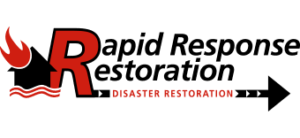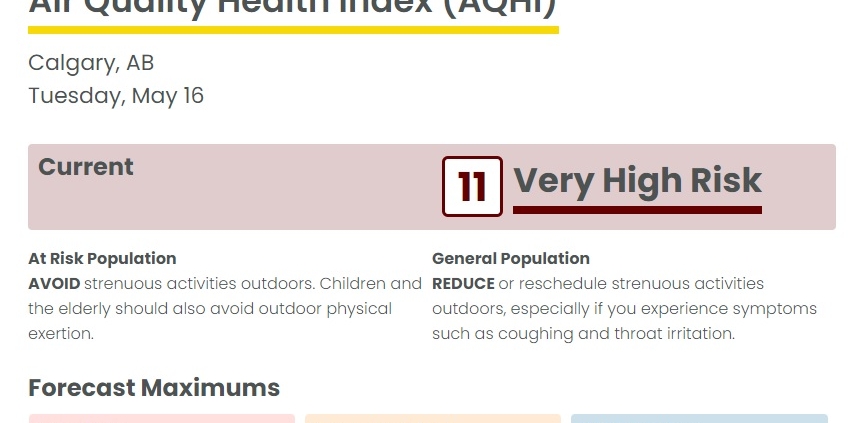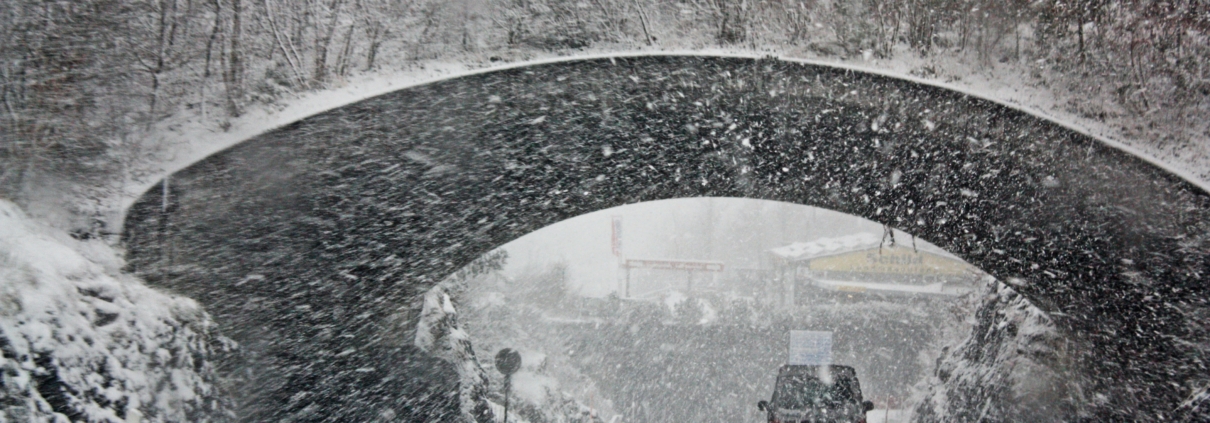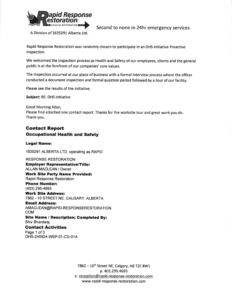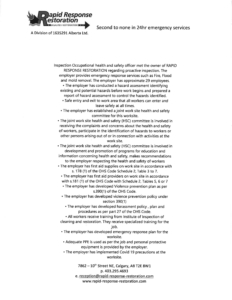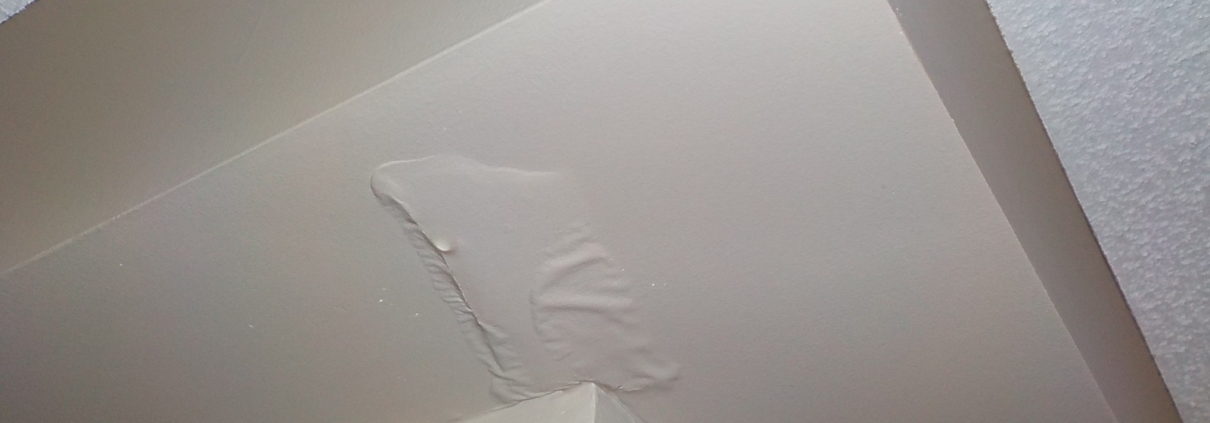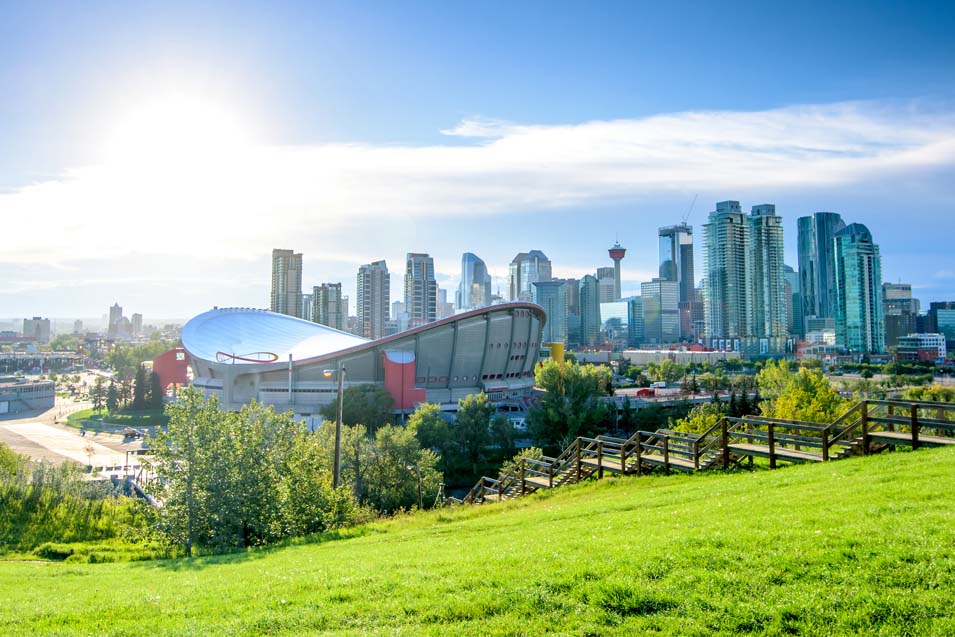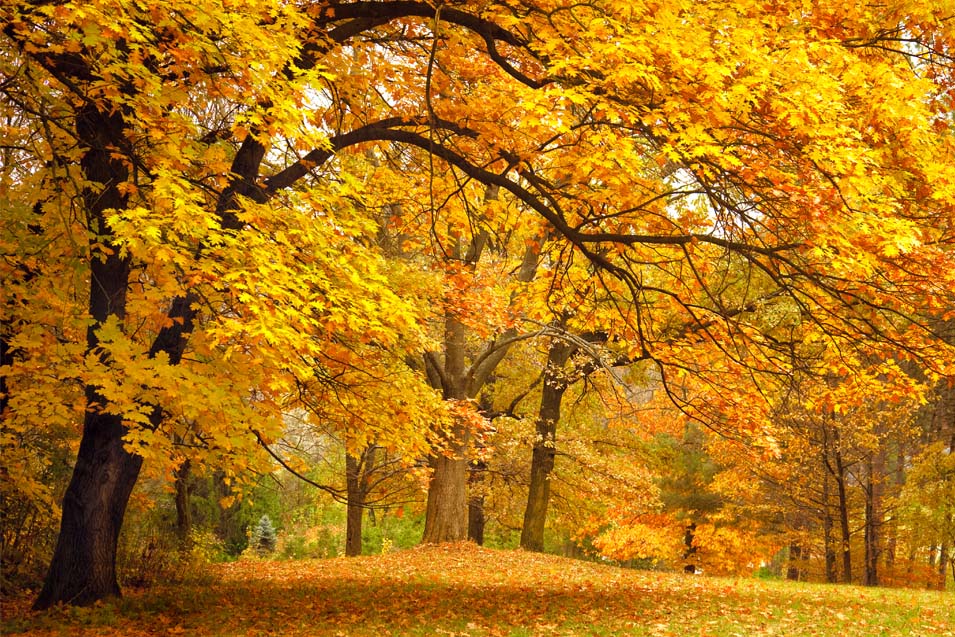Winter in Calgary can be a beautiful sight to behold. However, with the beauty comes a risk of snowstorms. Snowstorms can cause significant damage to homes and businesses, leaving them in dire need of restoration services. In this blog post, we’ll discuss the effects of snowstorms on homes and businesses in Calgary and how Rapid Response Restoration can help.
Effects of Snowstorms on Homes and Businesses in Calgary.
Snowstorms can cause a variety of damages to homes and businesses, including:
- Roof Damage: The weight of heavy snow can cause roofs to collapse or leak, causing significant damage to the property.
- Water Damage: Snow melting on roofs and sidewalks can cause water to seep into homes and businesses, resulting in water damage and mold growth.
- Frozen Pipes: Subzero temperatures can cause pipes to freeze and burst, leading to flooding and water damage.
- Power Outages: Snowstorms can cause power outages that can last for days, leaving homes and businesses without heat or electricity.
- Structural Damage: Heavy snow and strong winds can cause trees, branches, and other debris to fall, causing structural damage to buildings.
How Rapid Response Restoration Can Help
Rapid Response Restoration in Calgary can help in several ways after a snowstorm, including:
- Water Damage Restoration: Rapid Response Restoration can quickly extract water and dry out affected areas to aid in the prevention of mold growth and further secondary damages.
- Roof Repair: Rapid Response Restoration also repairs or can replace roofs that were damaged by the snowstorm.
- Mold Remediation: Rapid Response Restoration can also provide mold remediation services to remove any mold growth caused by water damage.
- Emergency Response: Rapid Response Restoration offer 24/7 emergency response services to help homeowners and business owners in the event of a snowstorm.
Snowstorms can be devastating to homes and businesses in Calgary. However, Our company is well-equipped with the knowledge, experience, tools and equipment needed to restore properties to their pre-damage condition. If your home or business has been affected by a snowstorm, contact Rapid Response Restoration in Calgary today to get the help you need.
One of the leading causes for property damage is water. So many things in our homes involve water yet we rarely ever think about causing water damage. The usual suspects for causing such damages are burst pipes or Mother Nature and her crazy ways; when really there are so many more. See the list below for common culprits in your home.
- Broken Pipes, Yes it is number one on the list. Ensuring that you know where your pipes are and causes for them to break is an important part of home ownership. In Alberta the main cause for broken pipes is our fluctuation in weather. Cold to hot to cold again causes expansion and contraction that can result in stress on the pipes over time.
- Plugged drainage systems, this is a wide category that is not exclusive to the pipes in your home. Ensuring that your gutters are cleared of debris to allow for proper flow can prevent them from backing up and draining in other areas. If you have a swale in your back yard for water to run down always make sure that it is clear of leaves, mud and grass, one crazy storm or a neighbor who leaves a hose on can cause a back-up and overflow of water that has the potential to cause damage to so many areas. If you live near a water drain on the street be the neighbor who clears things like snow and ice from it, save yourself and others the hassle of having to deal with water backups.
- Washing machines and hot water tanks. Age plus wear and tear contribute to the potential cause of unexpected leaks. Depending on where they are in your home and what is surrounding them these can be minor leaks in the grand scheme of things, or they can lead to a headache of problems.
- Toilets, Yes they made the list of course. Toddlers and toys can be a huge cause of a toilet backup and/or overflow. Other factors to consider include too much toilet paper or non-flushable tissues such as Kleenex, paper towel or baby wipes. None of these tissues are flushable because they do not break down in the water, and in large quantities they can actually cause a blockage in your drainage pipes.
Being aware of these potential risks and doing your due-diligence can help you from ever experiencing costly water damage to your home.
Chinook winds are a phenomenon that largely affects the province of Alberta, Canada, as well as areas found in the Pacific Northwest of the United States. Since Chinooks bring with them the potential for great destruction to your home, it’s important to understand what they are and how you can be prepared for them. What is a Chinook and how does it cause broken pipes and flooding?
What is a Chinook?
Chinook winds typically originate off the Pacific Ocean. They rapidly increase in intensity, moving from temperatures as low as -20 degrees Celsius to 10-20 degrees Celsius in a very abbreviated time span; often as little as a few hours or several days. These vigorous winds rise to warm temperatures quickly before plummeting back to their starting point again. They blow in a western trajectory, primarily targeting the province of Alberta with Lethbridge and Calgary two of the cities that experience the most damage from these winds.
Chinook winds achieve their strength when they reach their maximum warmth and collide with the Rocky Mountains, causing a rapid cooling. When the cooling process begins, it results in precipitation in the form of rain or snow. The air loses its moisture and begins to move downwards towards flatter, more easterly ground. As the wind starts to move toward the west or the southwest, it begins to pick up speed and again increases in temperature, often reaching hurricane force. A previous storm in Lethbridge caused by Chinook winds experienced gale forces of up to 106 miles per hour.
When Chinook winds gather strength and affect a region, they can cause a number of problems for homes. Eavestroughs can become dislodged from houses and soffits can begin to loosen and sag. Chinook winds are sometimes referred to as “snow eaters” because they easily cause up to 12 inches of snow to evaporate in a matter of hours, leaving behind structural damage to homes.
Is There a Specific Chinook Season?
Chinooks are most commonly seen in the winter months. This is due to the large snow cover that is predominant in these regions during the coldest times of the year. Snow typically blankets the Rocky Mountain range in the winter, leading to a rapid cooling of the warm air blowing in from the Pacific Ocean.
The city of Lethbridge is the city that is affected the most, often experiencing as many as 30 to 35 Chinooks per year. However, Calgary is also regularly a victim of the damage caused by Chinooks.
Experts agree that the incidents of Chinook winds seems to be on the incline. This is attributed largely to global warming.
What are Some of the Most Commonly Seen Effects of Chinooks?
Chinooks leave a lot of damage in their wake. Though most of it is seen in buildings and homes, Chinooks also have a powerful impact on everything from the soil and local agriculture to the health and well being of people living within Chinook regions.
Here are some of the most common problems associated with Chinooks:
- Dramatic drops in humidity
- Rapid ice loss in rivers and lakes
- Sound carrying great distances
- Soil quality deterioration, and in may cases, loss
- Tree death
- Early photosynthesis of vegetation leading to dehydration and loss of plant life
- Soil moisture depletion
- Wire fence electrification leading to accidental death of animals
- Wood splitting
- Headaches
- Exacerbated nervous disorders
- Stroke
- Increase in fire hazards
- Greater risk of forest fires
- Home and property damage
How Do Chinook Winds Affect My Home?
Rapid shifting of temperatures as a result of Chinook winds leaves many homes in jeopardy. When temperatures reach a point of extreme cold, pipes will begin to freeze. Though Chinook winds carry with them warmth, they typically melt only the surface snow and ice, leaving behind them a vast depth of frost underground. Since this layer of frost reaches approximately 10 feet, it penetrates to the area where most water mains are located, leaving pipes in peril of bursting from extreme cold.
During the winter months, a layer of snow on the ground acts as a form of insulation, providing protection for water mains and household pipes. When Chinook winds cause the snow to vaporize, there is nothing in place to protect pipes from freezing. Experts recommend keeping a slow but steady flow of water moving through their taps to keep their pipes from becoming clogged with ice.
Unfortunately, burst pipes that occur on your property are your financial responsibility. However, the province of Alberta has instituted a program that benefits homeowners that take advantage of their frozen pipes initiative by maintaining a continuous flow of water through their taps. This program provides financial relief from excessively high water bills as a result of the additional water usage.
In addition to frozen and possibly burst pipes, Chinook winds can also be responsible for flooding. When the warm Chinook air combines with snow, it causes a rapid melting. This excess water needs a place to go, and sometimes, the runoff finds its way inside a home’s foundation, causing flooding of basements and other living spaces.
Homes which have a lot of additional snow piled on their rooftops may also experience leaking when Chinook winds cause an accelerated thaw. This rapid running of water off the sides of roofs can cause external features such as eavestroughs and soffits to become loose.
How Can I Prevent My House’s Pipes from Freezing?
The process of water moving from a liquid to a solid involves an expansion of approximately 9 percent. When pipes freeze, this expansion occurs quickly and with great force involved, causing the metal to fracture. Though some pipes burst as soon as the water turns to ice, this process often takes place when the pressure exerted against the pipe meets a weak point, causing a rupture.
Thankfully, there are some measures you can put in place to keep your pipes from freezing during the cold winter months, and particularly, when Chinook winds affect your area. These include:
- Be on the lookout for slow running faucets
At the first sign of a water flow that is slower than usual, it may be that your pipes are beginning the process of freezing. It is still possible to reverse this process if caught early enough.
- Increase the heat in your home
Warming the temperature inside your house can help keep water in your pipes from succumbing to freezing.
- Make use of fans to distribute heat through unused rooms
Rooms in your home that are regularly closed off or not in use may become too cold. You can put fans in these areas to help heat to move through the rooms to increase their temperature.
- Keep doors to vanities and cabinets open to allow warm air to reach pipes
Doors are an obstacle to maximum heat flow. To help your pipes maintain a good temperature, keep vanity and cabinet doors open to allow heat to permeate the region.
- Disconnect garden hoses
Outdoor faucets can and will burst if allowed to remain connected to a garden hose during the cold months.
- Close your garage door
A lot of excess heat can be released from an open garage door. Keep it closed to provide an extra measure of heat insulation.
- Allow water to run at a slow but steady pace on a continuous basis
Keeping water moving is a critical element of preventing frozen pipes.
- Heat the affected pipe
If it is evident that the freezing process has begun, it is a good idea to safely heat the pipe to allow the water to reliquify itself.
- Consider an electric heat cable
Electric heat cable gives an extra layer of protection to keep pipes safe during bitterly cold weather. These are controlled by a thermostat that distributes heat only when needed. The one down side to installing an electric heat cable is its high cost.
Live in an area regularly affected by Chinook winds? Consider some of our top tips to keep your house in tip top shape all year round.
Rapid Response Restoration was fortunate to have a young man apply to our company for summer employment. It was with reservation that we hire a young man for the summer, but we were pleasantly surprised and yes, it renewed our faith in the youth of today.
He was a pleasure to have in our company and his hard work and dedication to our company surpassed all our expectations.
It was refreshing to our staff to have Stephen around for the summer.
We wish Stephen all the best in his future endeavors and would welcome him back anytime.
If you live in an apartment/condo with radiant heating here are a few tips to help prevent the pipes from freezing.
- Close the windows. This seems fairly easy, however, we all know that one person who likes the fresh air in order to sleep or a breeze blowing no matter how cold it is outside. When cold air enters a unit via an open window it collides with the warm/ambient air and drops suddenly to the floor. Often times this is where a radiant heat line is located and with enough exposure to the cold pipes can freeze and burst. Depending on the temperature of the cold air this can happen in a matter of minutes.
- Furniture placement. When coordinating the placement of your furniture you should avoid placing items against the radiant heat lines. The heater covers are designed for proper air flow and misplaced furniture can obstruct this allowing the stagnant, cold air to rupture the line.
- The heat is on. Keeping the heat at a reasonable temperature inside the unit will help to ensure that the radiant heat lines run smoothly.
- Keep an eye out. If you are planning a weekend getaway have someone you trust complete an inspection to ensure no pinhole leaks have developed. If unattended these small issues can turn into larger problems quickly! If a flood occurs in an apartment/condo it does not take long for the water to start traveling down into other units or spaces. Being diligent on checking for water leaks we will help minimize the damage.
While taking precautions can help sometimes pipes can still burst. Should you find yourself in need of Property Restoration please give Rapid Response Restoration a call at 403-295-4693. Our certified Technicians and team members are on call 24/7 to help.
